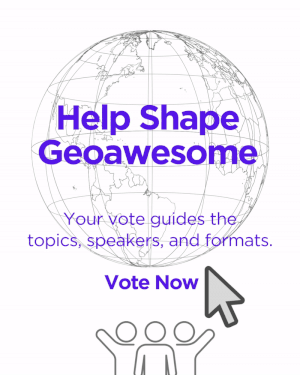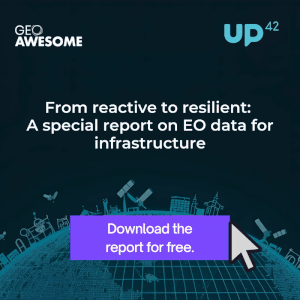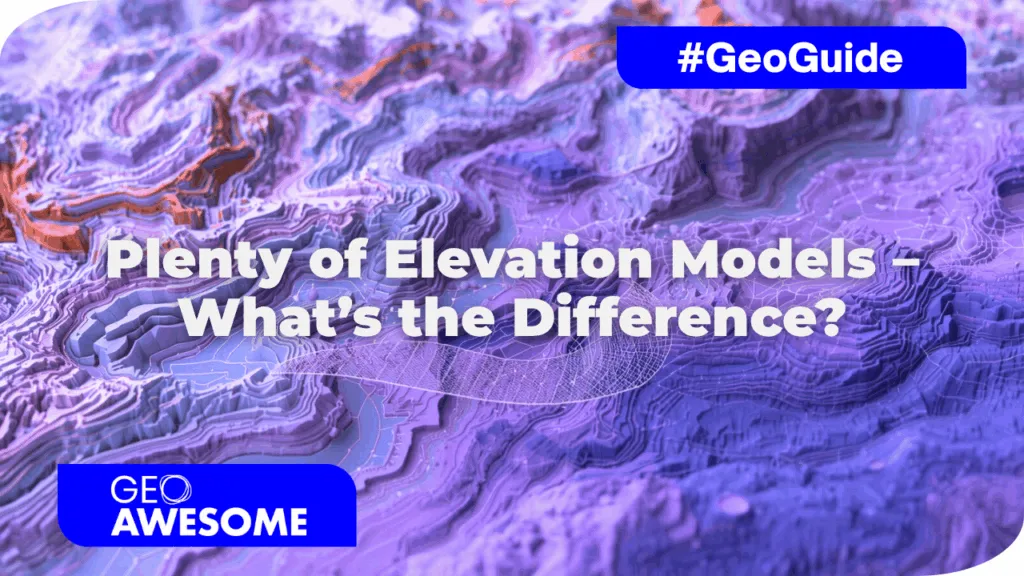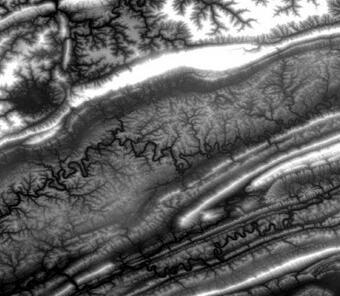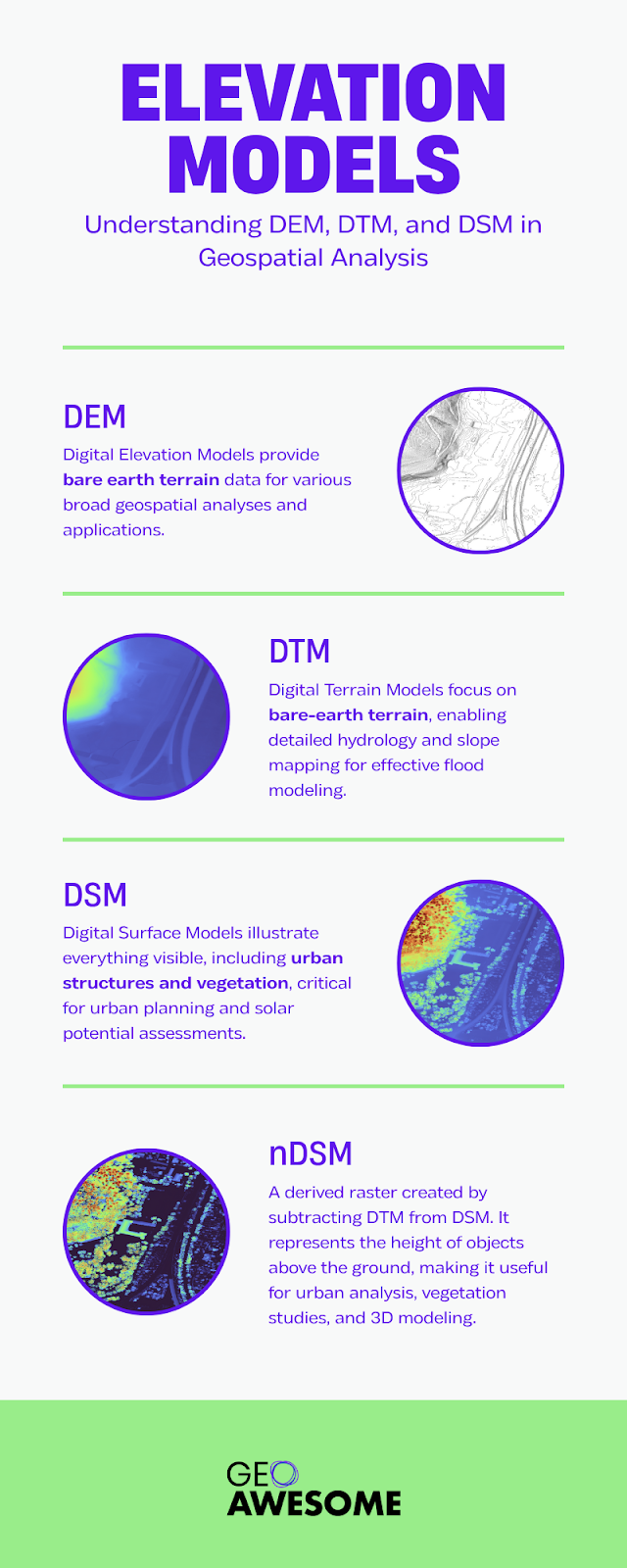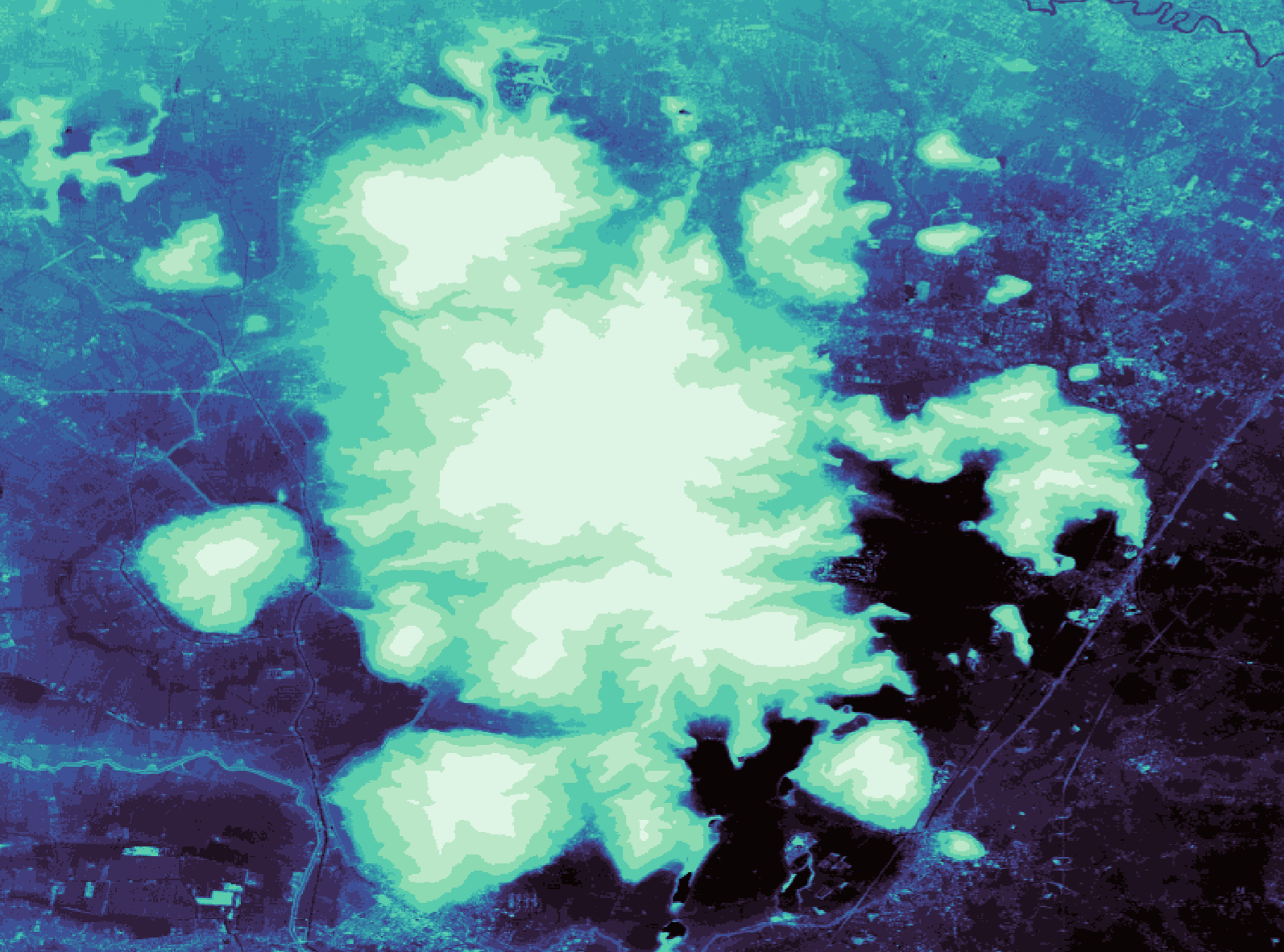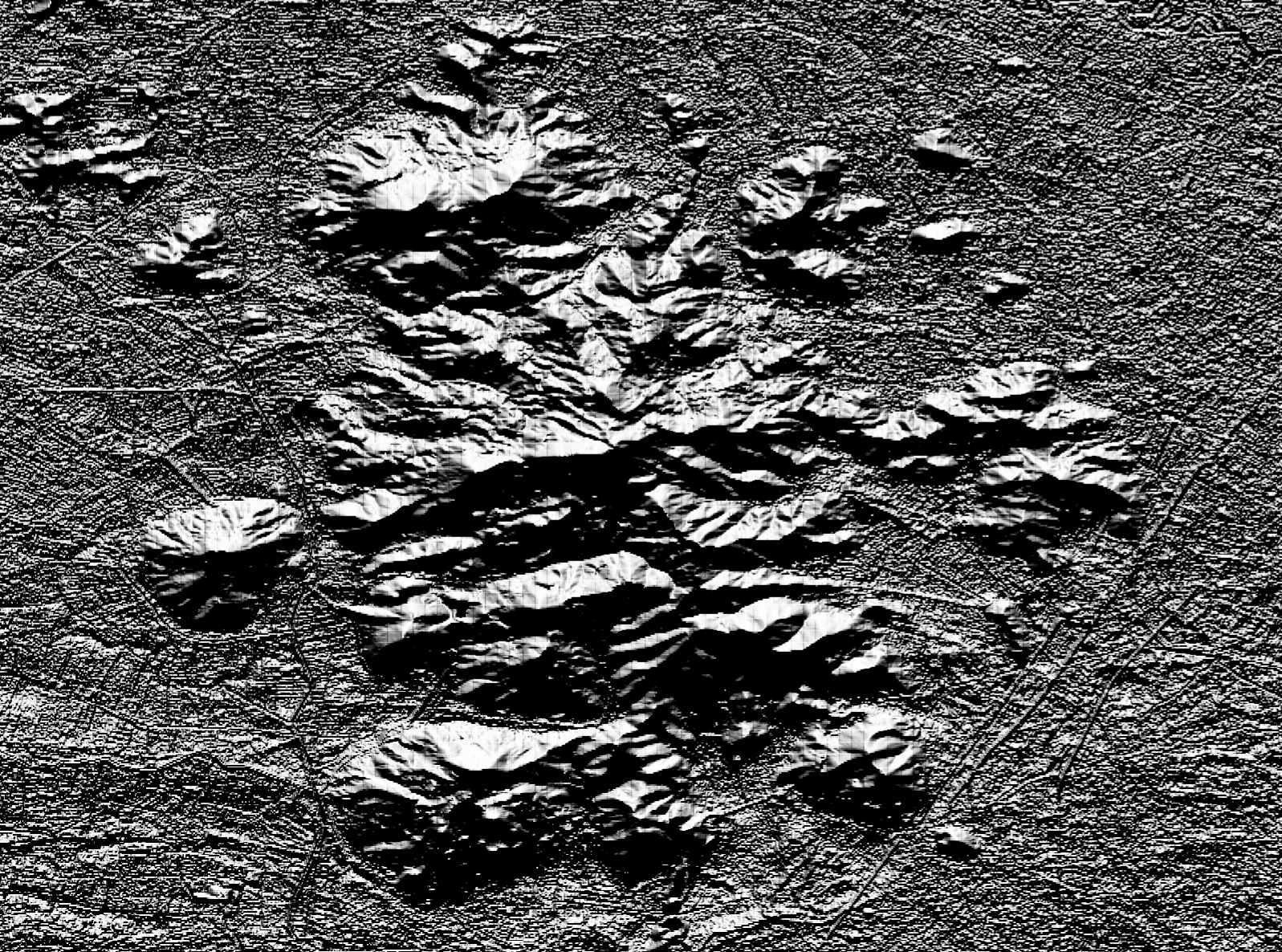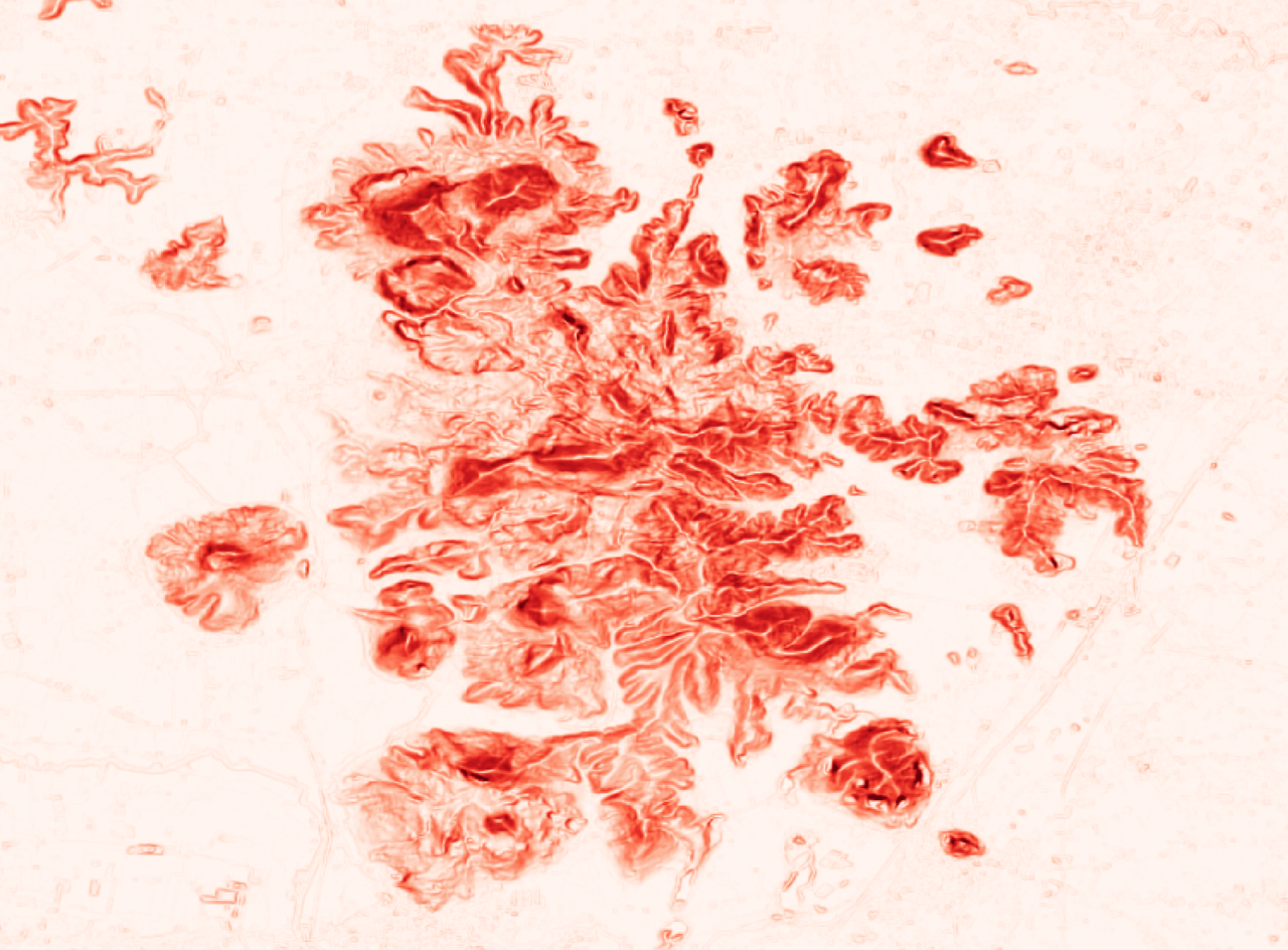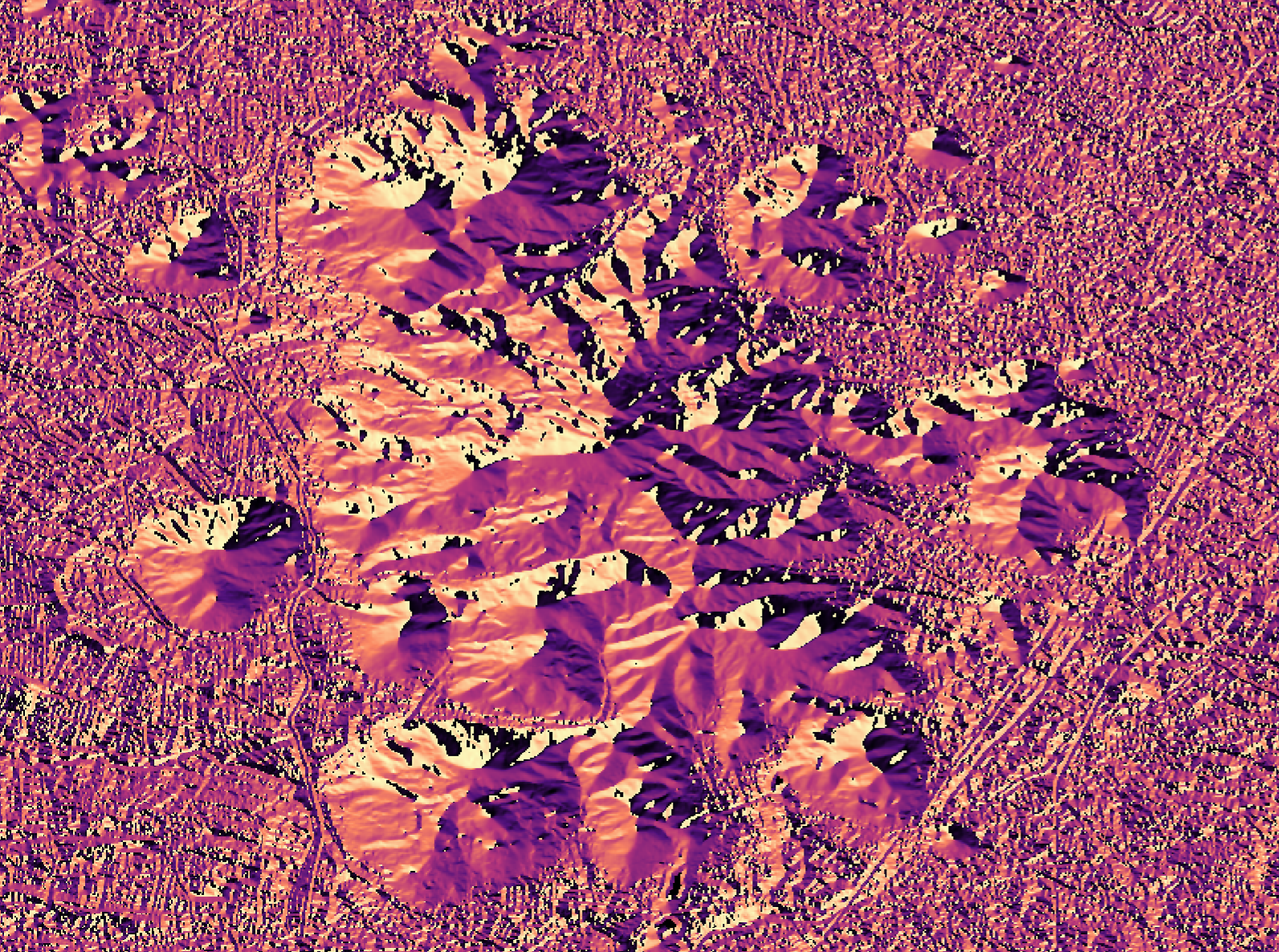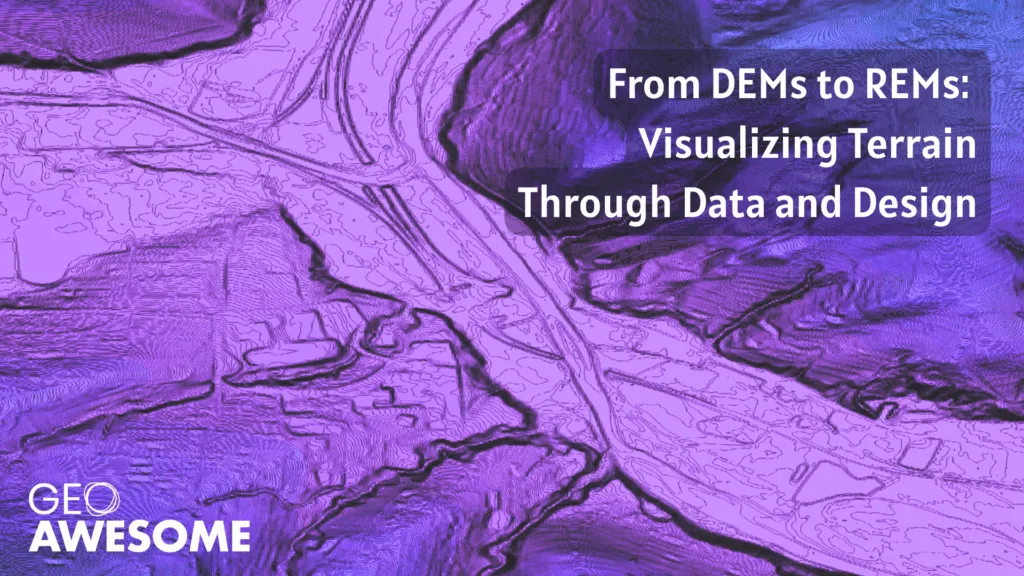
From DEMs to REMs: Visualizing Terrain Through Data and Design
Last time in our GeoGuide, we explored Digital Elevation Models (DEMs) — the saturated canvas behind many of the maps, analyses, and visual narratives in geospatial work. When rendered thoughtfully, elevation data becomes more than just a background layer; it transforms into a visual story in its own right. In this article, we’ll take a practical look at Relative Elevation Models (REMs) — what they represent, and how you can create them yourself.
Understanding Relative Elevation Models
REM expresses how high or low a point lies relative to a local reference surface, rather than to sea level. Instead of showing absolute altitude, REMs reveal subtle topographic variations that can be hidden in traditional DEMs.
The concept is simple: you remove the large-scale elevation trend (for example, the overall downstream slope of a river) to highlight the microtopography.
In practice, an REM can be derived in several ways:
- Polynomial Detrending (QGIS or Python):Fit a smooth surface (often a low-order polynomial) through the DEM and subtract it:
REM = DEM – f(x, y)
where f(x, y) is the fitted trend surface.
- River-Based Interpolation:
Estimate the river’s surface using sampled channel points and interpolate it (IDW or Kriging). Subtract that interpolated surface from the DEM to show relative heights within the valley:
REM = DEM – RiverSurface
- Normalization by Local Mean:
For large-area studies, compute the mean elevation within a moving window and subtract it to emphasize local relief:
REM = DEM – DEMlocal
Each approach produces a slightly different visual and analytical outcome. For fluvial geomorphology, REMs help delineate paleochannels and levees; for archaeology, they expose faint terrain traces of past human activity.
Making Your First REM
Ready to create scientifically meaningful terrain art? Here’s how to get started:
- Gather Your Data: Download a high-resolution DEM covering your area of interest (e.g.: river)
- Choose Your Method:
- IDW Method (QGIS) — Inverse Distance Weighting for interpolating river surface
- Cross-Section Method (QGIS) — Creating perpendicular profiles
- RiverREM Package (Python) — Automated generation with minimal input
- remr Package (R) — Statistical computing workflow
- Style with Purpose: REMs shine with perceptual color ramps (viridis, batlow) and subtle hillshading that emphasizes relative height patterns
Here we present REM visual based on the River-Based Interpolation with IDW Method performed in QGIS.
Another example, this time from the archaeological side, using Normalization by Local Mean. High-resolution DEMs can reveal subtle topographic patterns that point to forgotten landscapes. By removing large-scale terrain trends or using REMs, we can expose faint traces of ancient roads, buried walls, or settlement mounds, features invisible to the naked eye but preserved in elevation data.
Why Elevation “Maps” Capture Attention
Depth Through Traditional Techniques
With hillshades, hypsometric tints, contours, and relief shading, you can turn a raw DEM grid into a map that practically pops off the page. These classical cartographic methods have been refined over centuries, creating intuitive visual hierarchies that guide the eye across terrain.
The Geospatial Aesthetic
Overlay subtle grids, point clouds, or wireframes, and you lean into that “geospatial aesthetic” — it suggests data, precision, and modeling. This technical visualization style has become increasingly popular in data-driven storytelling, bridging the gap between scientific analysis and visual communication.
The Art-Science Intersection
Maps with “detrended” surfaces (like REMs – Relative Elevation Models) often yield abstract, flowing patterns that verge on art — and yet hold scientific meaning. As cartographer Dan Coe writes:
“Many REMs translate into wonderful flowing artistic images … a visual time capsule of a river’s natural history.”
These visualizations reveal historical river channels, migration patterns, and floodplain dynamics that might otherwise remain hidden in standard elevation data.
Neural Networks Meet Cartography
Recent techniques in neural network-based cartographic shading allow automated elevation visualizations that mimic hand-drawn quality. Research by Jenny et al. (2020) demonstrates that U-Net neural networks trained on Swiss topographic maps can replicate the expressiveness of hand-crafted relief shading in seconds — a process that traditionally required highly specialized cartographers and laborious manual work.
Revealing Hidden Patterns
When combined with historical maps or cultural layers, DEM-based visualizations can reveal subtle spatial patterns (old terraces, river control works, soil lines) that might otherwise be invisible. This multi-layered approach transforms elevation data from a simple terrain representation into a palimpsest of human and natural history.
Further Resources
- UP42 DEM Guide — Comprehensive technical overview of DEMs, DSMs, and DTMs
- ArcGIS Pro Spatial Analyst — Tools and techniques for DEM analysis
- Mapscaping Article — A deep-dive into DEM applications and visualization
Did you like this article? Read more and subscribe to our monthly newsletter!
